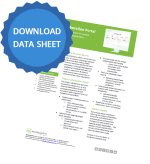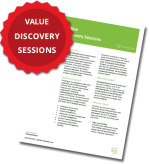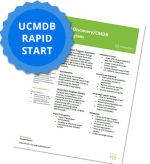Plan, Iterate, Evaluate, Repeat- Agile Demystified
By: Matt Angerer
When it comes to software delivery, a variety of factors must be taken into consideration, including the most effective delivery approach. The reality is that not all clients are the same and not all clients need the same thing. Clients undergoing a large ERP implementation with SAP or Oracle may require an approach that is waterfall (think V-model) in nature, affording greater stability and predictability. Other organizations may attempt to embrace the promise of Agile for other internal IT projects with daily stand-ups and an appointed Scrum Master to lead the charge.
In this day and age, business agility often depends on IT application agility. The traditional way of developing software sequentially is being replaced with the compelling promise of Agile to deliver high-quality software, much faster. But the question remains: how can a large scale IT project within a multi-national company embrace Agile software delivery across time zones, language barriers, and geographic corners of the world? Before we unveil that answer, let’s explore the promise of Agile and what it can mean for your organization.
The Promise of Agile
Agile offers an iterative approach that facilitates building software incrementally, rather than attempting to deliver the entire product at the end of the project. By breaking down a much larger project into smaller pieces and then prioritizing those pieces, agile software delivery makes it possible to complete pieces of the project in a continuous manner over a period of cycles.
Agile software product delivery begins by comprising a list of the features that should be contained in the final product. Similar to a To-Do list, the features contained in this list are sometimes referred to as user stories. It is important to analyze this first list to ensure everything necessary is present, and to estimate the amount of time each task will take complete.
The promise of Agile has slowly been realized by a mounting list of companies the world over. With a growing number of business applications moving to the cloud, companies are embracing Agile delivery methodologies more than ever to meet the expectations of their customer base.
VerticalRent Property Manager has embraced Agile to deliver pieces of functionality over a period of cycles or ‘sprints’. With a decentralized team scattered throughout the world, this world-class tenant screening software required a platform to help keep them organized and on-track with feature development. After analyzing several Agile software delivery management tools, the team embraced HP Agile Manager as a smarter and simpler way to manage its collaborative development efforts.
The drag and drop interface that enables easy release and sprint planning allowed their Scrum Master to quickly assign tasks to developers working from home across the world. What’s more, the embedded ALI (Application Lifecycle Intelligence) technology of HP Agile Manager provided the team’s project managers with code-level visibility by hooking directly into the developers Integrated Development Environments (IDEs). Decentralized and working from home, the developers building this .NET application continued to work within their native Visual Studio IDE while the Scrum Master was able to assign tasks, manage the release planning board, and identify potential bottlenecks within Agile Manager.
Prioritization of Workload
Whenever you make a To-Do list, you end up marking some items on the list as more important than others, placing those items near the top of the list. Prioritizing a list is an excellent way to get things done when you have a lot to accomplish and not a lot of time in which to accomplish it. By prioritizing the user stories in agile development, you can ensure that the most important items on the list are completed first. Consequently, the least important items are completed near the end of the project, thus ensuring that everything is completed on time.
Story points within HP Agile Manager give you the ability to prioritize the workload within your team. The higher the story points, the more complex they likely are, and subsequently more time-intensive. The algorithms built under the hood of HP Agile Manager automatically plan the capacity available within your team to complete a user story in a given sprint.
Tasks are quickly created within the user stories of the Release Backlog. This is where value delivery begins. As you work your way through the prioritized list, your team is able to begin the building process while also gaining critical feedback from your client. Light on the documentation front, Agile focuses on working software more than your functional/technical design from Microsoft Word. In a traditional approach, you would not typically be able to receive feedback until the end of the project after the software has been developed and delivered.
I say “typically” because waterfall teams in high-profile ERP projects often employ an outside objective vendor, known as Independent Verification & Validation (IV&V) , to provide iterative feedback throughout the System Development Lifecycle Cycle. Quality improvement measures like IV&V are available for large-scale enterprise ERP implementations that have difficulty embracing the velocity of Agile methodology.
With an agile approach, however, you have the benefit of being able to discover whether everything is going as it should or whether the project timeline is insufficient. Since an agile project operates continuously, your team is able to constantly analyze, design, and test. By implementing a process of open planning, agile design makes it possible to accept changes late in development, setting the stage for greater quality and productivity.
Plan, Iterate, Evaluate – Repeat
That’s the motto of Agile development teams the world over. It’s an “Agile mindset” that strategically empowers your team to achieve enterprise business objectives. Connected Application Lifecycle Intelligence (ALI) gives your team the capability to create higher quality code, while providing your Scrum Master with the transparency and control to drive productivity across decentralized environments. Let’s face it, you can’t co-locate your entire project team into one physical location all of the time. Does it help? Yes, studies have proven that co-location of Agile development teams drives collaboration and improves outcomes, but the cost of co-location is often prohibitive and solutions like HP Agile Manager ensure you have customizable planning and storyboards that support multiple methodologies (Scrum/Kanban). Sign up for a free 30 day trial of HP Agile Manager today, or email us at rpinfo@resultspositive.com to learn more.
Subscribe for the latest RP Blog Updates:










